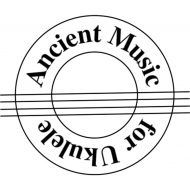Composers listed in alphabetical order by last name. All sources are Wikipedia.
Anonymous: Calleno costure me (also spelled Caleno custure me or Calin o custure me) is the title of a song mentioned in Shakespeare’s Henry V. The context is on a Hundred years war battlefield, where an English soldier cannot understand his French captive and intending to answer in similar gibberish pronounces the title of the song.
Anonymous: Greensleeves is a traditional English folk song and tune, likely Elizabethan in origin.
Carlo Calvi (c. 1610 – 1670) was an Italian guitarist. Intavolatura di chitarra, e chitarriglia was a book of instruction concerning tuning and tablature reading as well as a collection of musical pieces for guitar.
Vincenzo Galilei (c. 1520 – 2 July 1591) was an Italian lutenist, composer, and music theorist, and the father of the famous astronomer and physicist Galileo Galilei and of the lute virtuoso and composer Michelagnolo Galilei. He was a seminal figure in the musical life of the late Renaissance and contributed significantly to the musical revolution which demarcates the beginning of the Baroque era. In his study of pitch and string tension, he produced perhaps the first non-linear mathematical description of a natural phenomenon known to history. It was an extension of a Pythagorean tradition but went beyond it. He made some substantial discoveries in acoustics, particularly involving the physics of vibrating strings and columns of air. Vincenzo discovered that while the ratio of an interval is proportional to string lengths it varied with the square root of the tension applied (and the cube root of concave volumes of air).
Luis de Milán (c. 1500 – c. 1561) was a Spanish Renaissance composer, vihuelist, and writer on music. He was the first composer in history to publish music for the vihuela de mano, an instrument employed primarily in the Iberian peninsula and some of the Italian states during the 15th and 16th centuries, and he was also one of the first musicians to specify verbal tempo indications in his music. He seems to have been employed by the ducal court until around 1538. In 1535 he published his first book, a parlor game with music, entitled El juego de mandar; in the next year he published what was to be his most important book, Libro de música de vihuela de mano intitulado El maestro. This book was dedicated to King John III of Portugal; this dedication, and the existence of six villancicos which Milán wrote in Portuguese, suggest that he may have traveled to that country and spent some time there. The music of Luis Milan is popular with performers on the present-day classical guitar because it can be adapted very easily to their instrument.
Guillaume de Morlaye (c.1510–c.1558) was a French Renaissance era lutenist, composer and music publisher. He was a pupil of Albert de Rippe and lived and worked in Paris. In 1552 he received a ten-year license to publish music from Henry II, and between 1553 and 1558 published four lute collections in cooperation with Michel Fezandat and six lute collections compiled by Albert de Rippe. He also published three books of his own four-course Renaissance guitar compositions during 1552–53, including fantasies and dances, and also lute arrangements of Pierre Certon and Claudin de Sermisy. Besides his music publishing activities, Morlaye was reported to have engaged in the slave trade.
Hans Neusidler (c.1508 – 2 February 1563) was one of the most important early German lutenists. His eight publications feature intabulations of German songs, French chansons, Italian madrigals, dance pieces, and preludes of an improvisatory nature. Most of the works are in three parts, but there are two-part pieces for beginners and a few four-part arrangements in two of his publications. He republished popular works with newer arrangements in his later books. The initial 1536 publication, which was a beginner’s collection, opens with a written introduction to lute playing which gives insight into contemporaneous performance practice.
Melchior Neusidler (1531 – 1591) was a German lutenist. He was the eldest son of Hans Neusidler. His lute tablatures appear to be more refined than those of Hans Neusidler and influenced by the Italian style. There are about 250 pieces by Melchior Neusidler in various manuscripts and lute books.
Adrian Le Roy (c.1520–1598) became an accomplished musician and entered the service of, first, Claude de Clermont, then, Jacques II (Baron de Semblançay and Viscount of Tours), both members of the aristocracy who had influence at court. Le Roy and his cousin Robert Ballard founded the printing firm “Le Roy & Ballard”, and in August 1551 obtained a royal privilege from Henry II to print music. Royal patronage was a major factor in the company’s success since it ensured both a ready supply of new music from the court musicians and a market for its publications. Over the following two decades other rival companies dropped out of the market and from the 1570s onwards Le Roy & Ballard enjoyed a virtual monopoly in music publishing. Le Roy achieved renown as a composer and arranger of songs and instrumentals, his published work including at least six books of tablature for the lute, five volumes for the guitar and arrangements for the cittern. Le Roy’s book L’Instruction pour la mandore gives modern historians hints as to the instrument’s origins and design.
